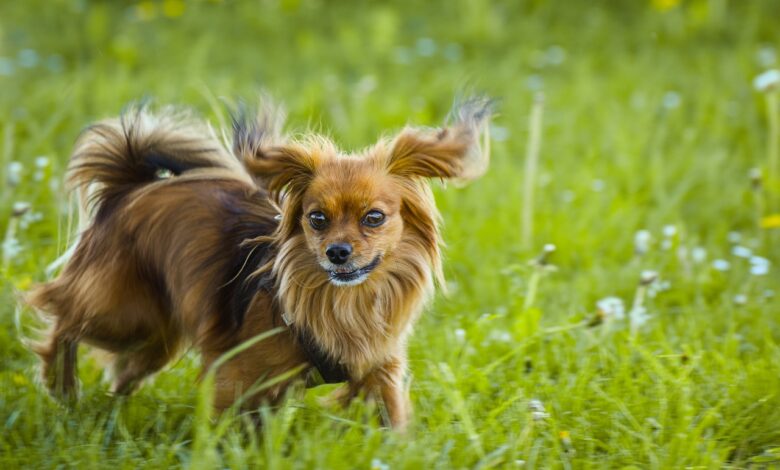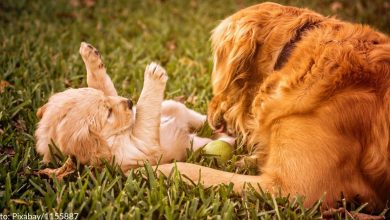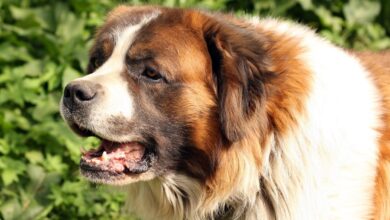The History and Origin of the Papillon: A Comprehensive Look

The Papillon, with its distinctive butterfly-like ears and elegant demeanor, stands as one of the oldest and most beloved toy breeds in the world. Renowned for its intelligence, grace, and spirited personality, the Papillon has a rich history that dates back several centuries, finding favor among royalty and nobility across Europe. The breed’s name, “Papillon,” means “butterfly” in French, a nod to its unique ear shape that resembles the wings of a butterfly. Initially known as the Dwarf Spaniel, depicted in paintings and artworks as early as the 16th century, the breed has evolved both in name and physical appearance. This article aims to explore the origins, development, and enduring appeal of the Papillon, offering a comprehensive look into the history of a breed that continues to capture the hearts of dog lovers worldwide.

The Origins of the Papillon
The Papillon’s lineage can be traced back to Europe in the early Renaissance, where it was initially bred as a companion dog for the nobility. Historical records and artworks from Italy and Spain depict small spaniels with drop ears, which are believed to be the ancestors of today’s Papillon and its cousin, the Phalène (the drop-eared variety). These small dogs were highly prized by the aristocracy for their elegance and were often featured in portraits with their noble owners. The breed’s development was significantly influenced by French and Belgian breeders, who refined its characteristics to emphasize its distinctive butterfly-like ears and lively personality.
Evolution and Refinement
Over the centuries, the breed transformed, particularly in its ear structure. The Phalène, or “moth” variety, with its drop ears, was the original version of the breed. However, through selective breeding, the erect-eared Papillon emerged, quickly gaining popularity for its unique appearance. This transformation is believed to have occurred in the 17th century, with both varieties existing simultaneously. The Papillon was recognized for its intelligence and trainability, making it a favored pet among royalty, including Louis XIV and Marie Antoinette.
The Papillon in Art and Society
The Papillon has been a favored subject in art and culture, symbolizing luxury and aristocratic taste. Renowned painters such as Rubens, Van Dyke, and Rembrandt have included the Papillon in their works, underscoring its status among European elites. The breed’s depiction in such art pieces provides valuable insights into its historical presence and significance in high society. The Papillon was not only a lapdog but also a symbol of wealth, social status, and refined taste, accompanying its owners in their lavish lifestyles.
The Breed Today
Today, the Papillon is cherished not only for its historical significance and beauty but also for its intelligence, agility, and affectionate nature. It excels in dog sports such as agility and obedience, showcasing its quick learning ability and eagerness to please. The Papillon has maintained its popularity as a companion dog, admired for its small size, adaptable nature, and lively character. Modern breeding practices have focused on preserving the breed’s health, temperament, and distinctive appearance, ensuring the Papillon continues to thrive as both a show dog and a beloved pet.
The Papillon’s enduring appeal lies in its unique blend of beauty, intelligence, and spirited personality. From its origins as a companion to nobility to its current status as a cherished pet and competitive show dog, the Papillon has navigated through history with grace and agility. Its distinctive butterfly-like ears and elegant demeanor continue to enchant dog lovers around the world, securing its place in the hearts of many. The Papillon stands as a testament to the enduring bond between humans and dogs, a breed that has transcended centuries to remain a symbol of elegance and companionship.
Frequently Asked Questions About The History of Papillons

1. What is the origin of the Papillon breed?
The Papillon, with its distinctive butterfly-like ears, originates from Europe, tracing its lineage back to the toy spaniels that were popular in royal courts as early as the 16th century. These toy spaniels, seen in numerous Renaissance paintings, were highly favored by the nobility and aristocracy across Italy, Spain, and France. The breed evolved from these early spaniels, undergoing significant refinement in France and Belgium, which led to the development of the characteristic erect ears that resemble butterfly wings. The name “Papillon” itself, meaning butterfly in French, was attributed to the breed in the 17th century due to its unique ear shape, distinguishing it from its drop-eared counterpart, the Phalène.
2. How did the Papillon get its name?
The Papillon was named for its distinctive, butterfly-like ear shape. “Papillon” is French for “butterfly,” a reference to the breed’s erect, fringed ears that resemble the wings of a butterfly. This naming occurred as the breed evolved in Europe, particularly in France, where breeders emphasized the unique ear shape through selective breeding. Initially known as the Dwarf Spaniel, the breed’s name transitioned to Papillon for those with erect ears, while the term Phalène, meaning “moth,” was used for those with drop ears, highlighting the breed’s aesthetic transformation over time.
3. What were Papillons originally bred for?
Papillons were originally bred as companion dogs for the European nobility. Their primary role was to provide comfort and companionship to their aristocratic owners. These small, elegant dogs were highly prized in royal courts for their beauty, intelligence, and affectionate nature. Unlike many other breeds that were developed for hunting, herding, or guarding, the Papillon’s main purpose was to be a lapdog, offering warmth and affection. Their small size and charming demeanor made them ideal pets for living in luxurious settings, often depicted in paintings sitting on the laps of their noble owners.
4. How has the appearance of Papillons changed over time?
The appearance of Papillons has evolved significantly from their early ancestors, the toy spaniels of the Renaissance period. Initially, these dogs had drop ears, similar to those of the modern-day Phalène, which is considered the original variety of the breed. Over centuries, through selective breeding, the erect-eared Papillon emerged, becoming the more recognized form of the breed. This evolution was driven by breeders’ preferences for the unique butterfly-like ear shape. Besides the ear shape, the breed’s size, coat, and coloration have been refined, but the Papillon has always retained its small, elegant stature and vibrant personality.
5. When did Papillons become popular among European royalty?
Papillons became popular among European royalty during the Renaissance, particularly in the 16th and 17th centuries. Their presence in royal courts is well documented through paintings and writings, where they were often depicted as cherished companions of kings, queens, and nobles. This popularity was not confined to one country but spread across Italy, Spain, and France, among others. Their elegance, intelligence, and affectionate nature made them favored pets of royalty, including figures such as Louis XIV of France and Marie Antoinette, who were known to have a fondness for the breed.
6. What is the difference between a Papillon and a Phalène?
The difference between a Papillon and a Phalène lies in their ear type. Papillons have erect ears that resemble the wings of a butterfly, which is how the breed got its name. Phalènes, on the other hand, have drop ears that lay flat against their head, and the name “Phalène” translates to “moth” in French, reflecting this ear type’s resemblance to moth wings. Both varieties share the same breed standards except for the ear carriage. The Papillon and Phalène are considered variations of the same breed, and both can be born in the same litter, showcasing the breed’s diverse genetic heritage.
7. Are Papillons good family pets?
Papillons are excellent family pets known for their affectionate, lively, and sociable nature. They thrive on human companionship and are suited to families with or without children. Their small size and adaptable personality make them great companions for various living situations, including apartments. Papillons are intelligent and trainable, often excelling in obedience and agility sports. They do well with attentive owners who provide them with mental and physical stimulation. However, due to their small size, interactions with very young children should be supervised to prevent accidental injury to the dog.
8. How do Papillons fare in dog sports?
Papillons excel in dog sports, showcasing their high intelligence, agility, and willingness to please. They are particularly adept at agility, obedience, and rally competitions, where they can demonstrate their quick learning ability and athletic prowess. Papillons enjoy the challenge and stimulation these activities provide and often perform at the top of their classes. Their small size and nimble movements give them an advantage in agility courses, while their eagerness to learn and please makes them responsive and attentive in obedience trials.
9. What is the typical temperament of a Papillon?
The typical temperament of a Papillon is friendly, alert, and energetic. They are known for their outgoing and playful nature, making them excellent companions. Despite their small size, they have a big personality and are not shy or withdrawn. Papillons are highly intelligent and trainable, often eager to learn new tricks and commands. They bond closely with their families and can be protective, sometimes wary of strangers, making them good watchdogs. Their adaptability and sociable demeanor make them well-suited to various lifestyles, from active singles to families with children.
10. How long do Papillons live?
Papillons have a relatively long lifespan, typically living between 12 to 16 years. Some can live even longer with proper care, including a balanced diet, regular exercise, and routine veterinary check-ups. Their longevity is attributed to their small size and generally good health, though like all breeds, they can be prone to specific health issues. Providing a loving environment, mental stimulation, and attention to their health needs can help ensure a Papillon lives a full, happy life.
11. What are common health issues in Papillons?
Common health issues in Papillons include patellar luxation, dental problems, and progressive retinal atrophy (PRA). Patellar luxation, a condition where the kneecap dislocates, is seen in many small breeds. Dental issues can arise from overcrowding of teeth, making regular dental care important. PRA, an eye condition leading to blindness, is also a concern, though reputable breeders screen for this and other genetic conditions. Overall, Papillons are a relatively healthy breed, and many health issues can be managed or mitigated with proper care and regular veterinary check-ups.
12. What grooming needs do Papillons have?
Papillons have moderate grooming needs due to their long, fine, and silky coat. They require regular brushing, several times a week, to prevent tangles and mats, particularly behind the ears, under the elbows, and in the feathering on the legs. Despite their long coat, Papillons are not heavy shedders. They need occasional baths to keep their coat clean, along with regular nail trimming, ear cleaning, and dental care. Grooming is also a bonding experience and helps to keep the Papillon looking its best.
13. How did Papillons adapt to life outside of royal courts?
After their popularity in royal courts waned, Papillons adapted to life outside of such luxurious environments by becoming cherished companions to people from all walks of life. Their adaptable and affectionate nature made the transition seamless. Today, Papillons thrive in various settings, from city apartments to country homes, proving that their appeal is not limited to the aristocracy. Their small size, intelligence, and sociable temperament make them suited to modern living, where they continue to be adored for their companionship and vibrant personalities.
14. Can Papillons live comfortably in apartments?
Papillons are well-suited to apartment living due to their small size and adaptable nature. They do not require a large amount of space to be happy and can get sufficient exercise through indoor play and daily walks. However, their high energy levels and intelligence mean they need regular mental stimulation to prevent boredom. Papillons are also known for their alertness and can be vocal, which may require training to manage in an apartment setting. Overall, with proper care and attention, Papillons can thrive in apartment environments.
15. Are Papillons easy to train?
Papillons are known for their intelligence and eagerness to please, making them relatively easy to train. They respond well to positive reinforcement techniques, such as treats and praise, and enjoy learning new commands and tricks. Their quick learning ability and desire for mental stimulation mean they can excel in obedience and agility training. However, their independent streak may require patience and consistency from their owners. Early socialization and training are important to ensure a well-behaved and sociable Papillon.




